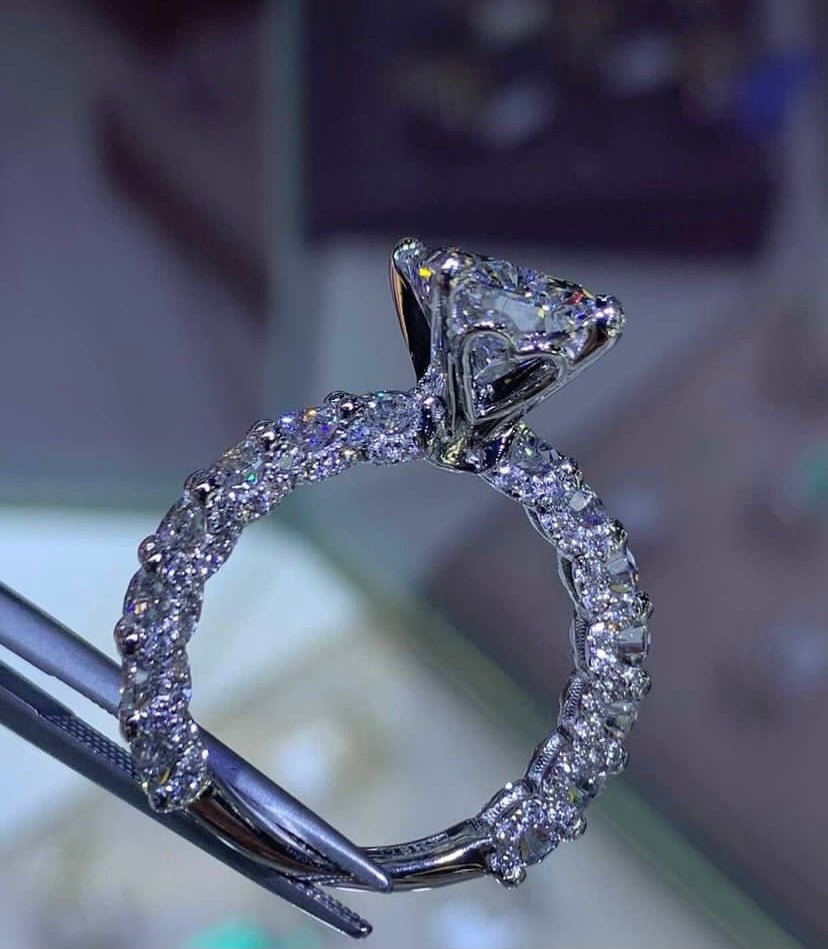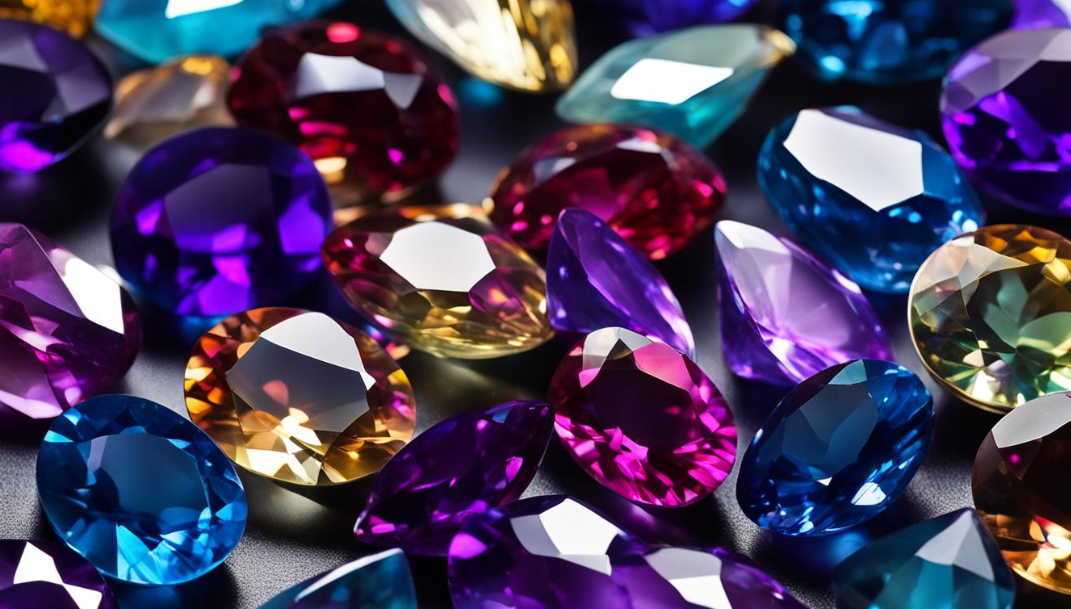When it comes to diamonds, two terms frequently pop up in discussions: mined diamonds and lab diamonds. But what’s the difference, and which one should you choose? Let’s dive in and explore the intricacies of both types of diamonds.
What Are Mined Diamonds?
Mined diamonds, as the name suggests, are diamonds that are excavated from the earth through mining processes. Formed over millions of years under high pressure and temperature deep within the earth’s mantle, these natural wonders are then brought to the surface through volcanic eruptions. While they have long been prized for their beauty and rarity, the process of mining diamonds comes with its fair share of environmental and ethical concerns.
Formation Process
Mined diamonds undergo a natural formation process that involves carbon atoms being subjected to extreme heat and pressure deep within the earth. This process, occurring over millions of years, results in the crystalline structure that gives diamonds their renowned brilliance and hardness.
Environmental Impact
One of the primary drawbacks of mined or lab diamonds are their environmental impact. The process of diamond mining often involves extensive land excavation, habitat destruction, and the consumption of large amounts of water and energy. Additionally, mining operations can release pollutants into the air and water, further exacerbating environmental degradation.
Ethical Concerns
Beyond environmental considerations, there are also ethical concerns associated with mined diamonds. In some regions, diamond mining has been linked to human rights abuses, including forced labor and child labor. The industry has made efforts to address these issues, but challenges remain in ensuring fair labor practices throughout the supply chain.
What Are Lab Diamonds?
Lab diamonds, on the other hand, are created in controlled laboratory environments rather than being formed naturally underground. Despite being man-made, lab diamonds possess the same physical and chemical properties as mined diamonds, making them indistinguishable to the naked eye.
Production Process
Lab diamonds are created using two primary methods: High Pressure High Temperature (HPHT) and Chemical Vapor Deposition (CVD). Both processes involve replicating the conditions found in the earth’s mantle to grow diamond crystals from carbon atoms.
Environmental Benefits
One of the significant advantages of lab diamonds is their minimal environmental impact. Unlike mined diamonds, which require extensive mining operations, lab diamonds are produced in a controlled laboratory setting using sustainable practices. This reduces the need for land excavation and minimizes the release of pollutants into the environment.
Ethical Advantages
Lab diamonds also offer ethical advantages over their mined counterparts. By eliminating the need for diamond mining, lab-grown diamonds help mitigate the risk of human rights abuses associated with traditional mining operations. Additionally, lab diamonds are traceable throughout the production process, providing transparency and accountability.
Comparison: Mined vs. Lab Diamonds
Now that we understand the basics of both types of diamonds, let’s compare them side by side to see how they stack up in terms of quality, cost, and sustainability.
Quality
In terms of quality, there is virtually no difference between mined and lab diamonds. Both types possess the same chemical composition and physical properties, including hardness, brilliance, and clarity. This means that lab diamonds offer the same level of beauty and durability as their mined counterparts.
Cost
One significant difference between mined and lab diamonds is cost. Lab diamonds are typically more affordable than mined diamonds, as they do not require the extensive mining and extraction processes associated with natural diamonds. This makes lab diamonds an attractive option for budget-conscious consumers who still want a high-quality diamond.
Sustainability
From a sustainability standpoint, lab diamonds are the clear winner. The production of lab diamonds requires significantly fewer resources and has a minimal environmental impact compared to diamond mining. Additionally, lab diamonds help reduce the demand for mined diamonds, thereby decreasing the need for environmentally destructive mining practices.
Popularity and Market Trends
In recent years, lab diamonds have been gaining popularity among consumers and jewelry manufacturers alike. With increasing awareness of environmental and ethical issues, more people are opting for lab-grown diamonds as a sustainable and responsible alternative to mined diamonds.
Misconceptions Surrounding Lab Diamonds
Despite their growing popularity, there are still some misconceptions surrounding lab diamonds that warrant clarification.
Quality Concerns
One common misconception is that lab diamonds are of lower quality than mined diamonds. In reality, lab diamonds undergo the same rigorous testing and grading processes as mined diamonds, ensuring that they meet the highest standards of quality and brilliance.
Perception in the Market
Another challenge facing lab diamonds is perception in the market. Some consumers may still associate lab diamonds with synthetic gemstones or inferior quality. However, as awareness grows and more people learn about the benefits of lab diamonds, these perceptions are gradually changing.
Benefits of Choosing Lab Diamonds
So why should you consider choosing lab diamonds for your next jewelry purchase? Let’s explore some of the benefits.
Quality Assurance
Lab diamonds undergo strict quality control measures throughout the production process, ensuring consistency and precision in their cut, color, and clarity. This means you can have confidence knowing that your lab diamond meets the highest standards of excellence.
Customization Options
Lab diamonds offer a wide range of customization options, allowing you to create a unique piece of jewelry that reflects your personal style and preferences. Whether you’re looking for a classic solitaire or a modern halo design, lab diamonds can be tailored to suit your individual tastes.
Environmental Impact
By choosing lab diamonds, you’re making a positive impact on the environment by supporting sustainable and responsible diamond production practices. With concerns about climate change and environmental degradation on the rise, many consumers are seeking out eco-friendly alternatives like lab-grown diamonds.
Physical Characteristics
While lab diamonds possess the same physical characteristics as mined diamonds, there are some subtle differences that can help you distinguish between the two. For example, lab diamonds may exhibit different growth patterns or inclusion types than natural diamonds.
How to Identify Lab Diamonds
it’s crucial to look for reputable certification to ensure authenticity and quality. Certifying bodies such as the Gemological Institute of America (GIA) and the International Gemological Institute (IGI) provide detailed reports that confirm a diamond’s origin and characteristics. Be sure to request a certification for any lab diamond you’re considering to verify its authenticity and quality.
Industry Regulations and Standards
To maintain integrity within the diamond industry, various regulations and standards are in place to govern the production and sale of diamonds.
Oversight Organizations
Organizations like the Kimberley Process Certification Scheme (KPCS) aim to prevent the trade of conflict diamonds by implementing stringent regulations and monitoring practices. Additionally, industry associations and trade groups work to uphold ethical standards and promote responsible practices among diamond manufacturers and retailers.
Certification Processes
Diamond certification involves a thorough evaluation of a diamond’s quality, including its cut, color, clarity, and carat weight. By obtaining a certification from a reputable laboratory, consumers can have confidence in the authenticity and value of their diamond purchase.
The Future of Diamond Production
As technology continues to advance, the future of diamond production looks promising. Innovations in diamond synthesis techniques and sustainable manufacturing practices are driving the growth of the lab-grown diamond industry.
Technological Advancements
Advancements in technology, such as advanced spectroscopy and crystal growth techniques, are making it increasingly feasible to produce high-quality diamonds in a laboratory setting. These technological innovations are not only improving the efficiency of diamond production but also reducing its environmental footprint.
Market Projections
Experts predict that the demand for lab-grown diamonds will continue to rise in the coming years as consumers become more conscious of the environmental and ethical implications of their purchasing decisions. With growing awareness and acceptance of lab diamonds, the market for sustainable and responsibly sourced diamonds is expected to expand significantly.
Consumer Considerations When Purchasing Diamonds
When purchasing diamonds, there are several factors to consider to ensure you’re making an informed decision that aligns with your values and preferences.
Budget
Consider your budget and how much you’re willing to spend on a diamond. Lab diamonds offer a more affordable option compared to mined diamonds, making them an attractive choice for budget-conscious consumers.
Preferences
Think about your preferences regarding diamond size, shape, and design. Whether you prefer a classic round-cut diamond or a unique fancy shape, there are plenty of options available to suit your individual style.
Sustainability Concerns
If sustainability is important to you, consider choosing a lab-grown diamond over a mined diamond. By opting for a lab diamond, you’re supporting environmentally friendly and ethically responsible diamond production practices.
Case Studies: Success Stories
Across various industries, businesses and consumers are embracing lab-grown diamonds for their ethical and environmental benefits.
Businesses Adopting Lab Diamonds
Many jewelry retailers and manufacturers are incorporating lab-grown diamonds into their product offerings to meet the growing demand for sustainable and responsibly sourced diamonds. Companies like Brilliant Earth and Ada Diamonds specialize in lab-grown diamonds and have garnered widespread acclaim for their commitment to ethical and sustainable practices.
Customer Testimonials
Customers who have purchased lab-grown diamonds often rave about their quality, beauty, and affordability. With positive reviews and word-of-mouth recommendations, lab diamonds are gaining traction among consumers looking for socially conscious and eco-friendly alternatives to traditional mined diamonds.
Tips for Caring for Lab Diamonds
Proper care and maintenance are essential for preserving the beauty and brilliance of your lab-grown diamonds.
Maintenance Practices
To keep your lab diamond looking its best, avoid exposing it to harsh chemicals, extreme temperatures, or abrasive materials. Regular cleaning with a gentle jewelry cleaner and a soft brush can help remove dirt and debris and restore its sparkle.
Cleaning Methods
When cleaning your lab diamond, use a mild soap and warm water solution and gently scrub the diamond with a soft-bristled brush. Rinse thoroughly with clean water and dry with a soft, lint-free cloth to prevent water spots.
Conclusion
In conclusion, the choice between mined and lab diamonds ultimately comes down to personal preference and values. While mined diamonds have long been prized for their rarity and beauty, lab-grown diamonds offer a sustainable and ethical alternative without compromising on quality or brilliance. By opting for lab diamonds, consumers can make a positive impact on the environment and support responsible diamond production practices.





